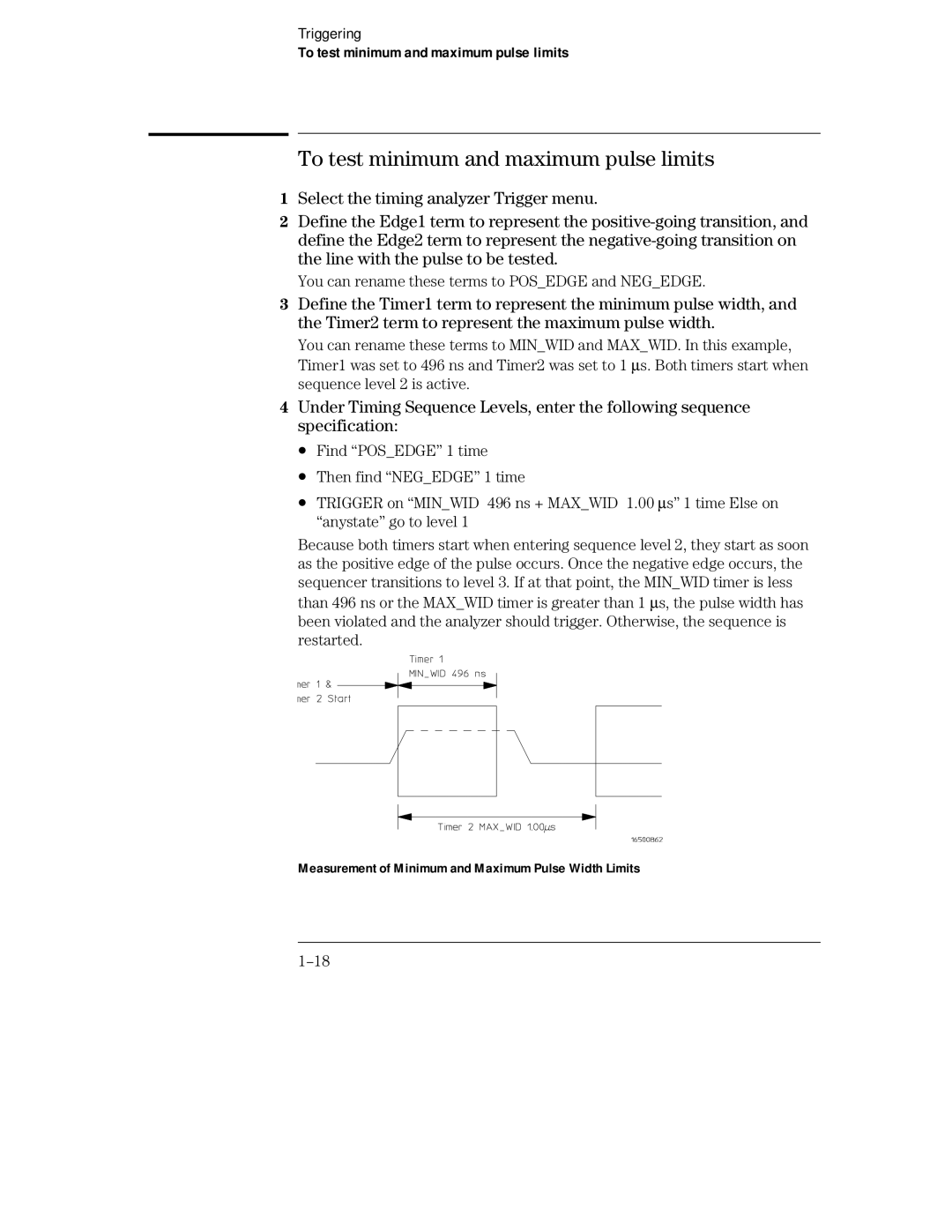
Triggering
To test minimum and maximum pulse limits
To test minimum and maximum pulse limits
1Select the timing analyzer Trigger menu.
2Define the Edge1 term to represent the
You can rename these terms to POS_EDGE and NEG_EDGE.
3Define the Timer1 term to represent the minimum pulse width, and the Timer2 term to represent the maximum pulse width.
You can rename these terms to MIN_WID and MAX_WID. In this example, Timer1 was set to 496 ns and Timer2 was set to 1 μs. Both timers start when sequence level 2 is active.
4Under Timing Sequence Levels, enter the following sequence specification:
∙Find “POS_EDGE” 1 time
∙Then find “NEG_EDGE” 1 time
∙TRIGGER on “MIN_WID 496 ns + MAX_WID 1.00 μs” 1 time Else on “anystate” go to level 1
Because both timers start when entering sequence level 2, they start as soon as the positive edge of the pulse occurs. Once the negative edge occurs, the sequencer transitions to level 3. If at that point, the MIN_WID timer is less than 496 ns or the MAX_WID timer is greater than 1 μs, the pulse width has been violated and the analyzer should trigger. Otherwise, the sequence is restarted.
Measurement of Minimum and Maximum Pulse Width Limits
